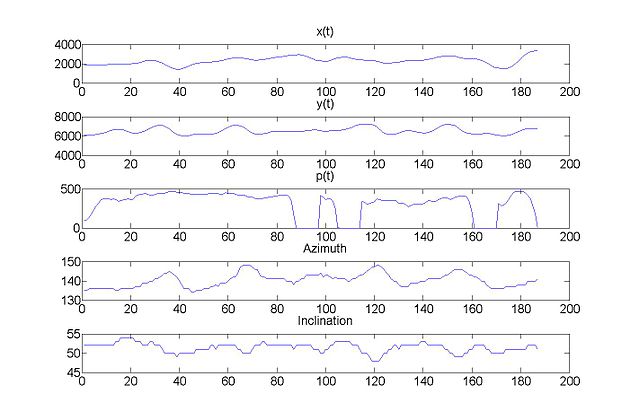Signature recognition
Signature recognition is a behavioural biometric. It can be operated in two different ways:
Static: In this mode, users write their signature on paper, digitize it through an optical scanner or a camera, and the biometric system recognizes the signature analyzing its shape. This group is also known as “off-line”.
Dynamic: In this mode, users write their signature in a digitizing tablet, which acquires the signature in real time. Another possibility is the acquisition by means of stylus-operated PDAs. Dynamic recognition is also known as “on-line”. Dynamic information usually consists of the following information:
- spatial coordinate x(t)
- spatial coordinate y(t)
- pressure p(t)
- azimuth az(t)
- inclination in(t)
The state-of-the-art in signature recognition can be found in the last major international competition.[1]
The most popular pattern recognition techniques applied for signature recognition are Dynamic Time Warping (DTW), Hidden Markov Models (HMM) and Vector Quantization (VQ). Combinations of different techniques also exist[2] .


Related techniques
Recently, a handwriten biometric approach has also been proposed.[3] In this case, the user is recognized analyzing his handwritten text (see also Handwritten biometric recognition).
Databases
Several public databases exist, being the most popular ones SVC,[4] and MCYT.[5]
References
- ^ Houmani, Nesmaa (2012). "BioSecure signature evaluation campaign (BSEC'2009): Evaluating online signature algorithms depending on the quality of signatures". Pattern Recognition. 45 (3): 993–1003.
{{cite journal}}: Unknown parameter|coauthors=ignored (|author=suggested) (help); Unknown parameter|month=ignored (help) - ^ Faundez-Zanuy, Marcos (2007). "On-line signature recognition based on VQ-DTW". Pattern recognition. 40 (3): 981–992.
- ^ Chapran, J. (2006). "Biometric Writer Identification: Feature Analysis and Classification". International Journal of Pattern Recognition & Artificial Intelligence. 20: 483–503.
- ^ Yeung, D (2004). "SVC2004: First international signature verification competition". Lecture Notes in Computer Science. LNCS-3072: 16–22.
{{cite journal}}: Unknown parameter|coauthors=ignored (|author=suggested) (help) - ^ Ortega-Garcia, Javier. "MCYT Baseline Corpus: A Multimodal Biometric Database". IEE Proceedings - Vision, Image and Signal Processing. 150: 395–401.
{{cite journal}}: Unknown parameter|coauthors=ignored (|author=suggested) (help)
